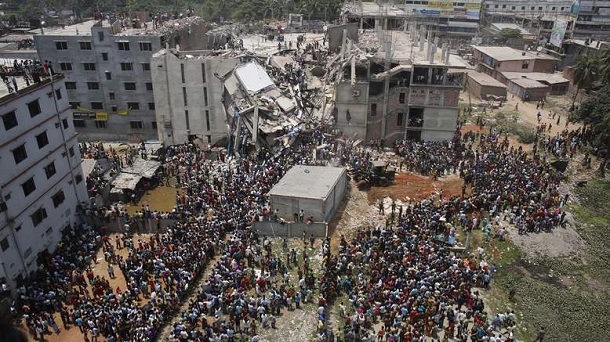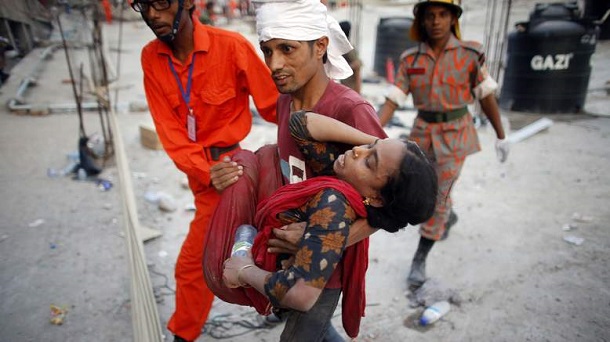A building in Bangladesh was ordered to be evacuated a day before it collapsed but clothing factories there continued working and ignored police instructions, officers claim.
The order was made after deep cracks became visible – as the death toll from the tragedy rose to at least 175 and it emerged a Primark supplier was based at the premises.
After the cracks were reported on Tuesday, managers of a bank that also had an office in the building, evacuated their workers and suspended their operations.
But the garment factories continued working, ignoring the instructions of officers, said police spokesman Mostafizur Rahman.
The Bangladesh Garment Manufacturers and Exporters Association had also asked the factories to suspend work starting on Wednesday morning, just hours before the building fell.
“After we got the crack reports, we asked them to suspend work until further examination, but they did not pay heed,” said Atiqul Islam, the group’s president.
Survivors say they were made to carry on working in the eight-storey block despite apparent concerns about its safety.
The building, in Savar on the outskirts of the capital Dhaka, housed at least four factories producing clothes for leading Western retailers.
The high street giant Primark has confirmed that one of its suppliers occupied the second floor of the building.
Bosses at the retailer say they were “shocked and saddened” by the collapse.
In a statement released on the company’s website, a Primark spokesman said: “The company is shocked and deeply saddened by this appalling incident at Savar, near Dhaka, and expresses its condolences to all of those involved.
“Primark has been engaged for several years with NGOs and other retailers to review the Bangladeshi industry’s approach to factory standards. Primark will push for this review to also include building integrity.
“Meanwhile Primark’s ethical trade team is at this moment working to collect information, assess which communities the workers come from, and to provide support where possible.”
Army Brigadier General Mohammed Siddiqul Alam Shikder said late on Thursday that many people were still trapped in the building.
The disaster came less than five months after a factory fire killed 112 people and underscored the unsafe conditions faced by Bangladesh’s garment workers.
Workers said they had hesitated to enter the building on Wednesday morning because it had developed such large cracks a day earlier that it even drew the attention of local news channels.
Just hours later the building came tumbling down.
Tens of thousands of people have gathered at the site, weeping and searching for family members.
Searchers worked through the night to get through the jumbled mess of concrete with drills or their bare hands, passing water and flashlights to those pinned inside the building.
“I gave them whistles, water, torchlights. I heard them cry. We can’t leave them behind this way,” said fire official Abul Khayer.
Abdur Rahim, who worked on the fifth floor, said a factory manager gave assurances that the cracks in the building were no cause for concern, so employees went inside.
“After about an hour or so, the building collapsed suddenly,” Mr Rahim said.
The next thing he remembers is regaining consciousness outside.
On a visit to the site, Home Minister Muhiuddin Khan Alamgir told reporters the building had violated construction codes and that “the culprits would be punished.”
[adrotate banner=”41″]


